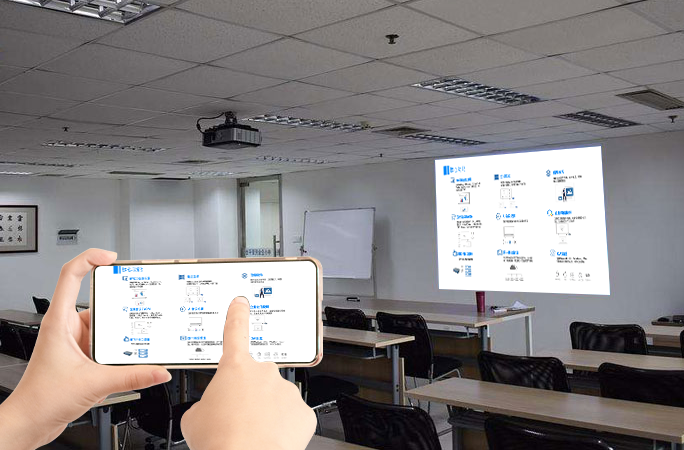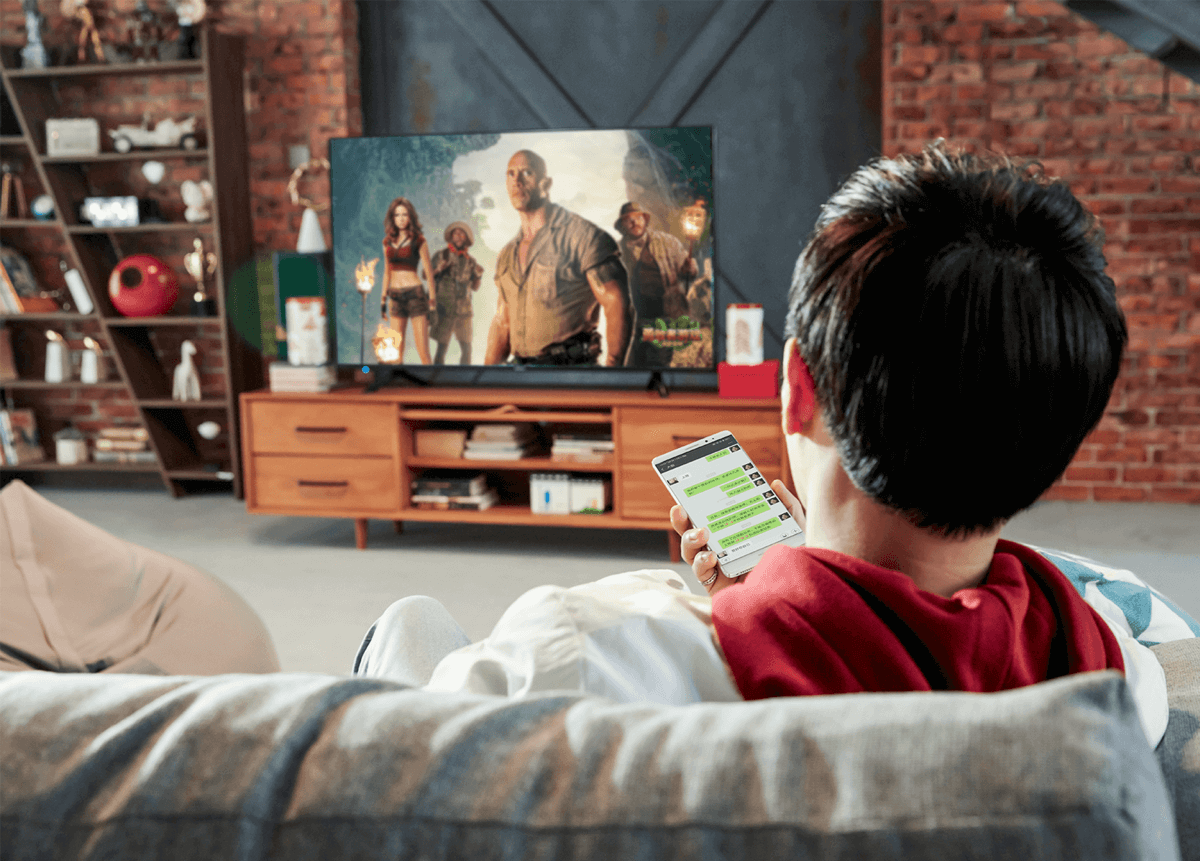Phone Screen Mirroring: An All-Scenario Convenient Interconnection Solution
Phone screen mirroring has become the core link connecting personal terminals with public large screens. With its characteristic of being a “mobile control center in your pocket,” it solves the problems of device interconnection in scenarios such as office, education, retail, and home, allowing content sharing to move from the “era of cable restraints” to the “era of fingertip control.”
Office Meetings: A Pocket-Sized Meeting Hub
Pain Points and Breakthroughs
In traditional meetings, transferring content from a phone to a large screen relies on data cables or complex settings, and the process is often interrupted by system compatibility issues. The phone screen mirroring solution breaks through brand barriers with “cross-system direct connection” technology, enabling one-click mirroring for Android, iOS, and HarmonyOS devices.
- Ultra-Fast Launch: An attendee opens Bluetooth on their phone and brings it near the conference screen. A connection pop-up appears in 3 seconds. After tapping to confirm, PPTs and data charts are projected instantly, eliminating the 5 minutes of redundant time spent on cable plugging and debugging.
- Mobile Control: In the mirroring state, the phone can be a touchpad to control page-turning on the large screen, and supports gestures for zooming in on key data. During a remote meeting, real-time notes taken on the phone can be mirrored to the cloud meeting interface, enabling zero-latency collaboration from different locations.
- Secure Encryption: It uses dynamic verification codes for mirroring. The cache is automatically cleared upon exit, preventing phone privacy from being leaked on a public large screen and meeting the data security needs of enterprises.
Adapted Hardware
- Small Conference Rooms: A 32-55-inch touch screen + a wireless receiver module, which supports a split-screen view for up to 4 phones at the same time to compare multiple proposals during group discussions.
- Large Lecture Halls: A mirroring gateway connects to a main and secondary screen. The core content from the mirrored phone is displayed on the main screen, and annotations submitted from attendees’ phones are shown on the side screen in real time, accommodating both presentation and interaction.
Smart Education: Classroom Interaction at Your Fingertips
Scenario Innovations
In the classroom, a student’s phone is often seen as a source of distraction. The phone screen mirroring solution turns it into an interactive tool, building a two-way content flow channel between “teachers and students, and students and students.”
- Instant Feedback: After a teacher mirrors courseware from a phone, students submit their answers via a WeChat mini-program. The main screen generates a heatmap of incorrect questions in 10 seconds, and the efficiency of targeted explanations is increased by 40%.
- Mobile Visualizer: Students can use their phones to film their homework or experimental phenomena and mirror them to the large screen, replacing a traditional visualizer. Observation results can be shared instantly even in an outdoor classroom.
- Group Mirroring: Up to 6 student phones can connect to the classroom’s large screen at the same time. Mind maps and problem-solving steps from each group are displayed in a split-screen view, allowing for a direct clash of different viewpoints during a history debate class.
Hardware Deployment
- Regular Classroom: A projector + a mini mirroring box, which supports wireless phone mirroring for low-cost interactive teaching.
- Laboratory: A waterproof mirroring terminal is paired with a touch screen. Students can film chemical reactions with their phones and mirror the video in real time for analysis. Experimental records are saved simultaneously.

Retail Marketing: A Display Window in Your Palm
Conversion Path
A salesperson’s phone becomes a bridge connecting products and customers, increasing the willingness to buy through dynamic displays and instant interaction.
- 3D Visualization: By scanning a product’s QR code with a phone, a 3D model is mirrored to a large screen in the store. A customer can use gestures to rotate and view the internal structure of an appliance or the fabric details of clothing. This increases the conversion rate by 50% compared to explaining with a catalog.
- Personalized Recommendations: A customer selects their preferred parameters on their phone, and the large screen automatically generates a comparison table of matching products. The salesperson can then provide a precise explanation based on the data.
- Social Amplification: A customer can mirror their video of using the product to the large screen. Sharing it on a social media platform can earn them a discount, creating word-of-mouth promotion.
Implementation Configuration
- Small Store: A 55-inch wall-mounted screen + a phone mirroring module. A salesperson can project real-life scenarios of product use from their phone at any time, replacing static posters.
- Exhibition Booth: A portable mirroring device is connected to a folding screen. Salespeople can quickly mirror case studies and data from their phones, accommodating the needs of mobile displays.
Home Entertainment: A Control Center in Your Palm
Experience Upgrades
The phone becomes a universal remote for home entertainment, upgrading mirroring from “one-way projection” to “two-way interaction.”
- Seamless Flow: When watching a series on your commute, you can come home, bring your phone near the TV, and it will automatically mirror and resume playback. When you receive a call, the screen pauses, and it automatically resumes after you hang up.
- Multi-Person Sharing: During a family gathering, multiple phones can take turns mirroring photos and videos to the TV. It supports a picture-in-picture display, preventing people from fighting over the screen.
- Voice Control: An elderly person can say, “Mirror square dance tutorial,” and the phone automatically recognizes the command and projects the content. The large screen simultaneously displays a step-by-step breakdown with text and images.
Hardware Combination
- Basic Model: A smart TV + a phone mirroring device, which supports one-click projection of videos, photos, and documents to meet daily needs.
- Advanced Model: A 4K TV + a sound system linkage. When a movie is mirrored from a phone, it automatically switches to cinema mode, and the screen and sound effects are optimized simultaneously.
The core value of phone screen mirroring is to seamlessly integrate the flexibility of a personal terminal with the display power of a large screen. From impromptu sharing in a conference room to instant interaction in a classroom, from personalized marketing in a store to easy entertainment at home, it simplifies operations, strengthens compatibility, and ensures security, allowing every fingertip touch to achieve efficient content delivery and redefining the convenient experience of device interconnection.